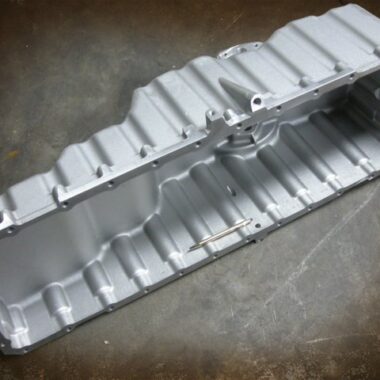Dive Deep: Insights About Aluminum Casting Processes
Dive Deep: Insights About Aluminum Casting Processes
Blog Article
Crafting Excellence: How to Achieve High-Quality Light Weight Aluminum Castings Whenever
In the realm of aluminum spreading, the pursuit of perfection is a constant trip that calls for a precise technique and a keen understanding of the ins and outs involved. Achieving constant high-quality light weight aluminum castings requires an extensive understanding of the procedures, from selecting the proper alloy to performing exact mold and mildew designs and thoroughly controlling casting specifications.
Understanding Aluminum Casting Procedures
Aluminum casting processes, crucial in the production industry, involve the intricate makeover of molten light weight aluminum right into strong forms through a series of meticulously controlled steps. Comprehending these processes is vital to accomplishing high-quality light weight aluminum spreadings constantly - about aluminum casting. The key approaches made use of in light weight aluminum casting are pass away casting, sand casting, and investment casting

Each of these procedures has its benefits and is picked based upon aspects like intricacy, quantity, and wanted coating of the light weight aluminum casting. about aluminum casting. Understanding the ins and outs of these techniques is crucial for producers intending to generate top quality aluminum castings consistently
Picking the Right Light Weight Aluminum Alloy
Choosing the suitable light weight aluminum alloy is a critical choice in the manufacturing of premium aluminum castings. The choice of alloy considerably impacts the homes and attributes of the end product. Different light weight aluminum alloys use varying levels of toughness, rust resistance, machinability, and thermal conductivity. When selecting an aluminum alloy for casting, it is vital to think about the details needs of the application to make sure ideal efficiency.
Among one of the most frequently used aluminum alloys for casting is A356. This alloy offers excellent castability, high stamina, and excellent corrosion resistance, making it suitable for a wide variety of applications. Conversely, 6061 aluminum alloy is favored for its superior weldability and excellent mechanical buildings. For applications requiring high stamina, 7075 light weight aluminum alloy is a popular selection due to its remarkable strength-to-weight ratio.
In enhancement to mechanical homes, factors to consider such as cost, availability, and post-casting processes should also influence the choice of the ideal light weight aluminum alloy. By meticulously reviewing these elements, makers can make sure the production of top notch light weight aluminum spreadings that fulfill the preferred specs.
Carrying Out Appropriate Mold Style
Developing a reliable mold and mildew style is essential for guaranteeing the successful manufacturing of high-quality light weight aluminum spreadings. Correct mold and mildew design plays a significant duty in achieving the wanted features of the end product. To apply a successful mold and mildew design, elements such as product flow, cooling prices, and part geometry should be thoroughly thought about.
One secret aspect of mold and mildew style is ensuring correct filling and solidification of the aluminum within the mold tooth cavity. This entails designing runner and gating systems that help with smooth metal flow and avoid problems such as air entrapment or incomplete filling. Additionally, integrating cooling channels into the mold layout helps regulate solidification rates and reduce the risk of porosity or contraction problems.

Controlling Spreading Parameters

Guaranteeing Post-Casting High Quality Checks
To keep the high quality of aluminum castings, comprehensive post-casting quality checks are necessary. After the casting procedure is completed, it is vital to ensure that the last products meet the preferred standards and requirements.
Dimensional precision is an additional crucial aspect that should be verified throughout post-casting high quality checks. Dimensions of key measurements and resistances ought to be taken to verify that the spreadings adhere to the required specs. Additionally, mechanical buildings such as hardness, tensile toughness, and impact resistance might require to be evaluated with material screening to make certain that the spreadings have the required toughness and sturdiness for their designated application.
Verdict
To conclude, attaining high-quality aluminum spreadings requires a detailed understanding of the spreading procedures, picking the ideal alloy, making molds effectively, regulating spreading criteria diligently, and conducting post-casting high quality checks carefully. By complying with these steps, manufacturers can continually create light weight aluminum castings that meet the greatest requirements of top quality and efficiency.
Achieving consistent premium aluminum spreadings demands a comprehensive understanding of the processes, from choosing the appropriate alloy to executing exact mold designs and carefully managing casting criteria. The main approaches made use of in light weight aluminum casting are pass away casting, sand spreading, and investment casting.
Financial investment casting, additionally known as accuracy casting, entails producing wax patterns that are covered in ceramic to develop sites molds.Selecting the proper aluminum alloy is a critical choice in the manufacturing of premium aluminum castings.Ensuring accurate control over spreading specifications is necessary for maintaining uniformity and top quality in aluminum casting production.
Report this page